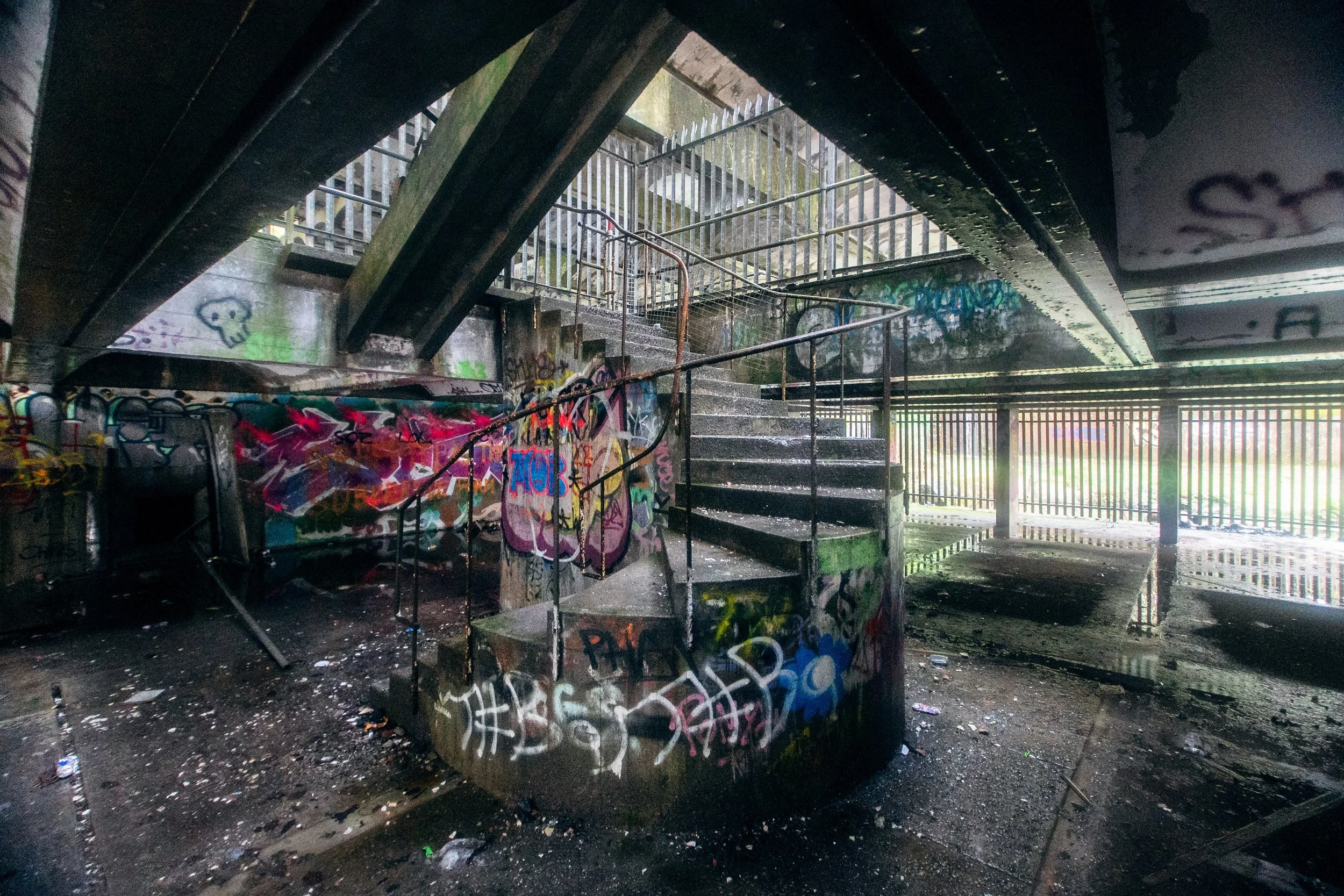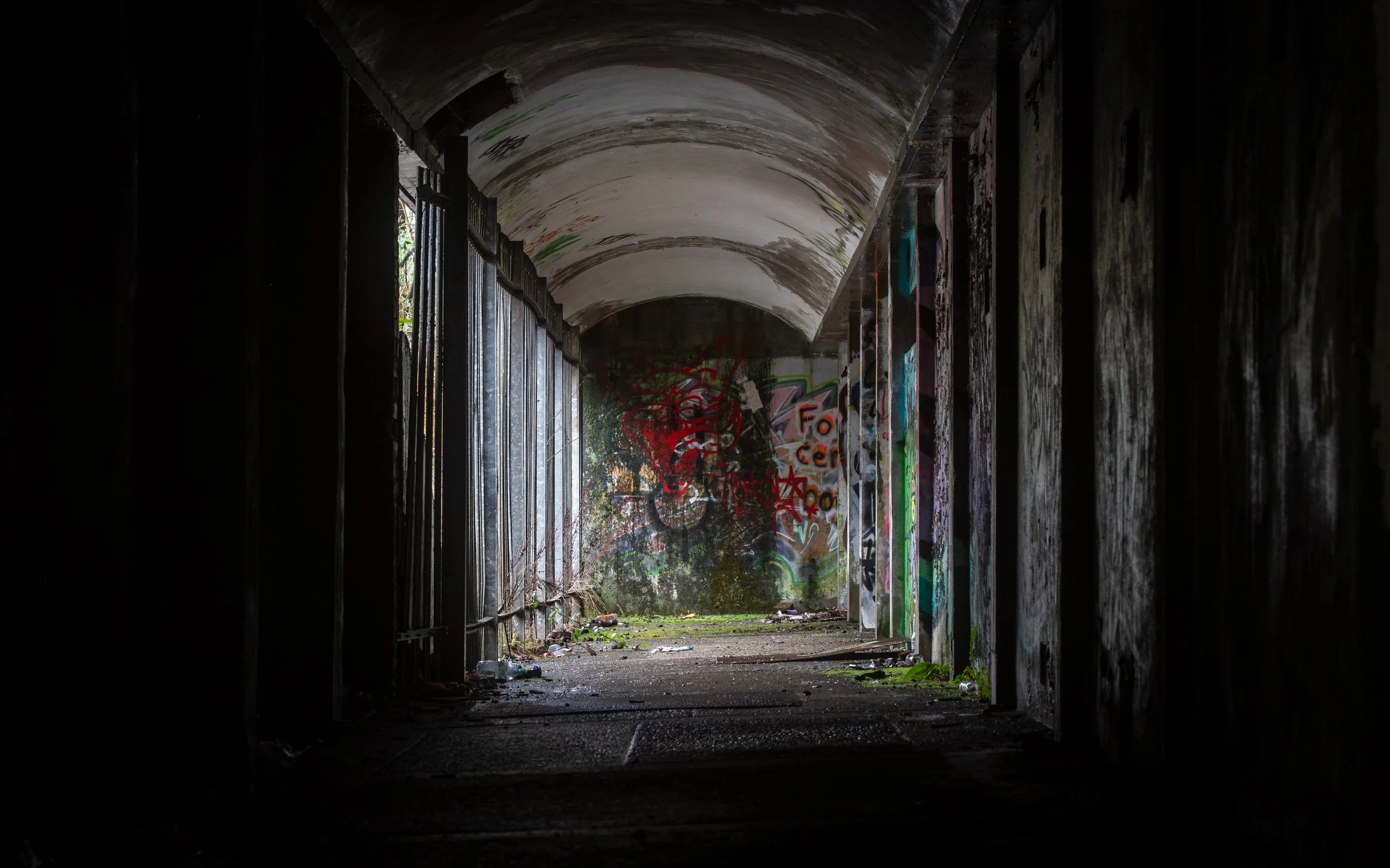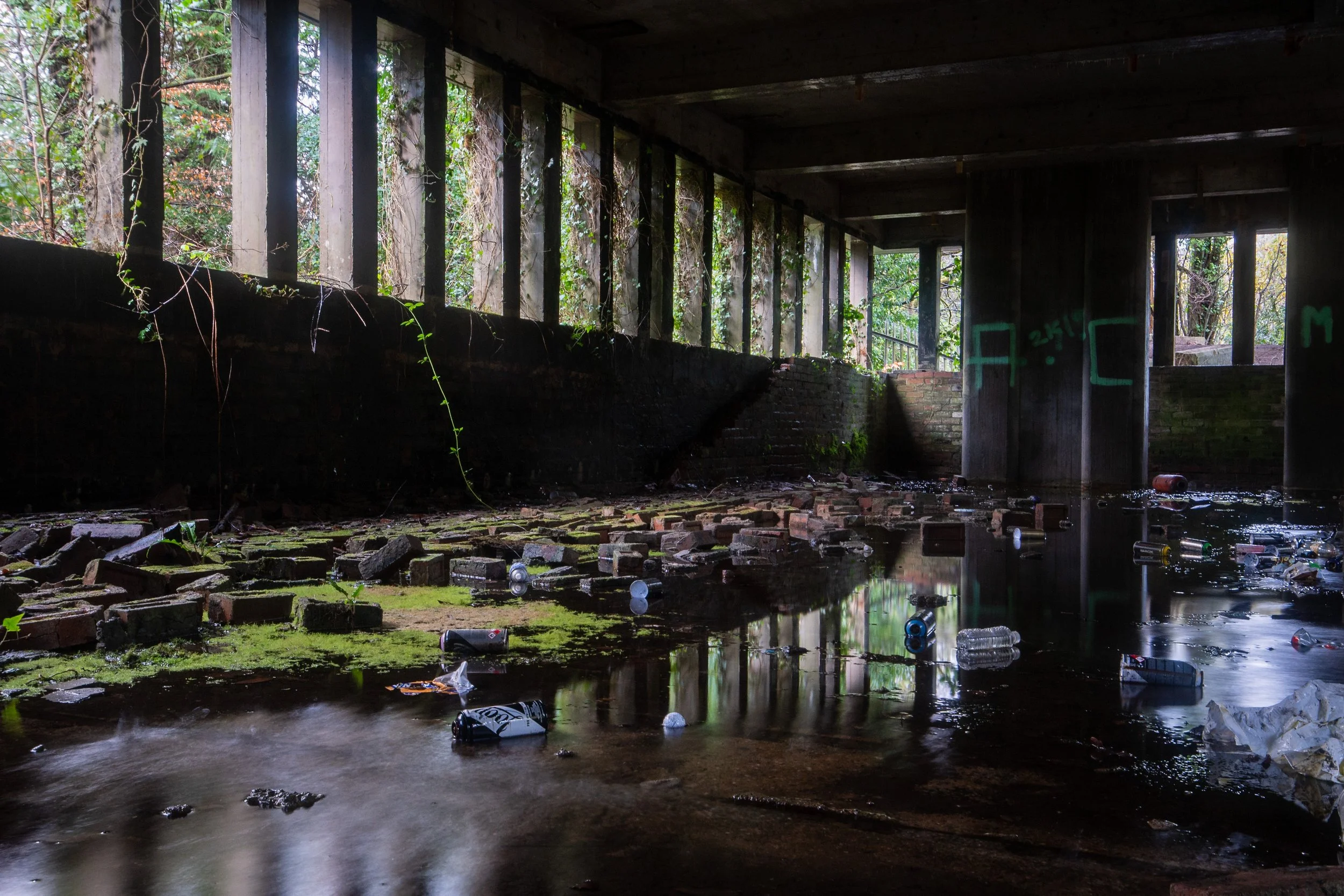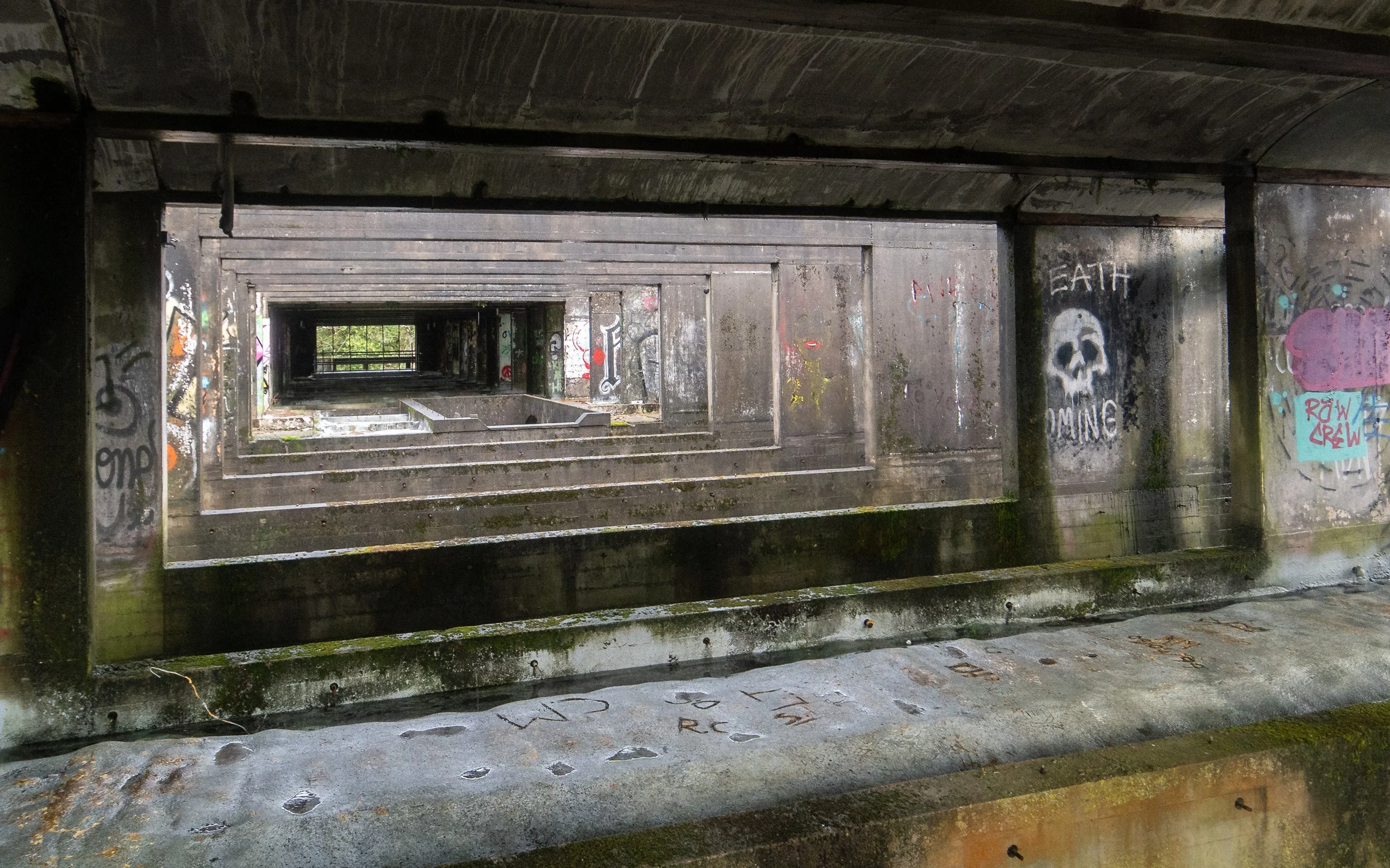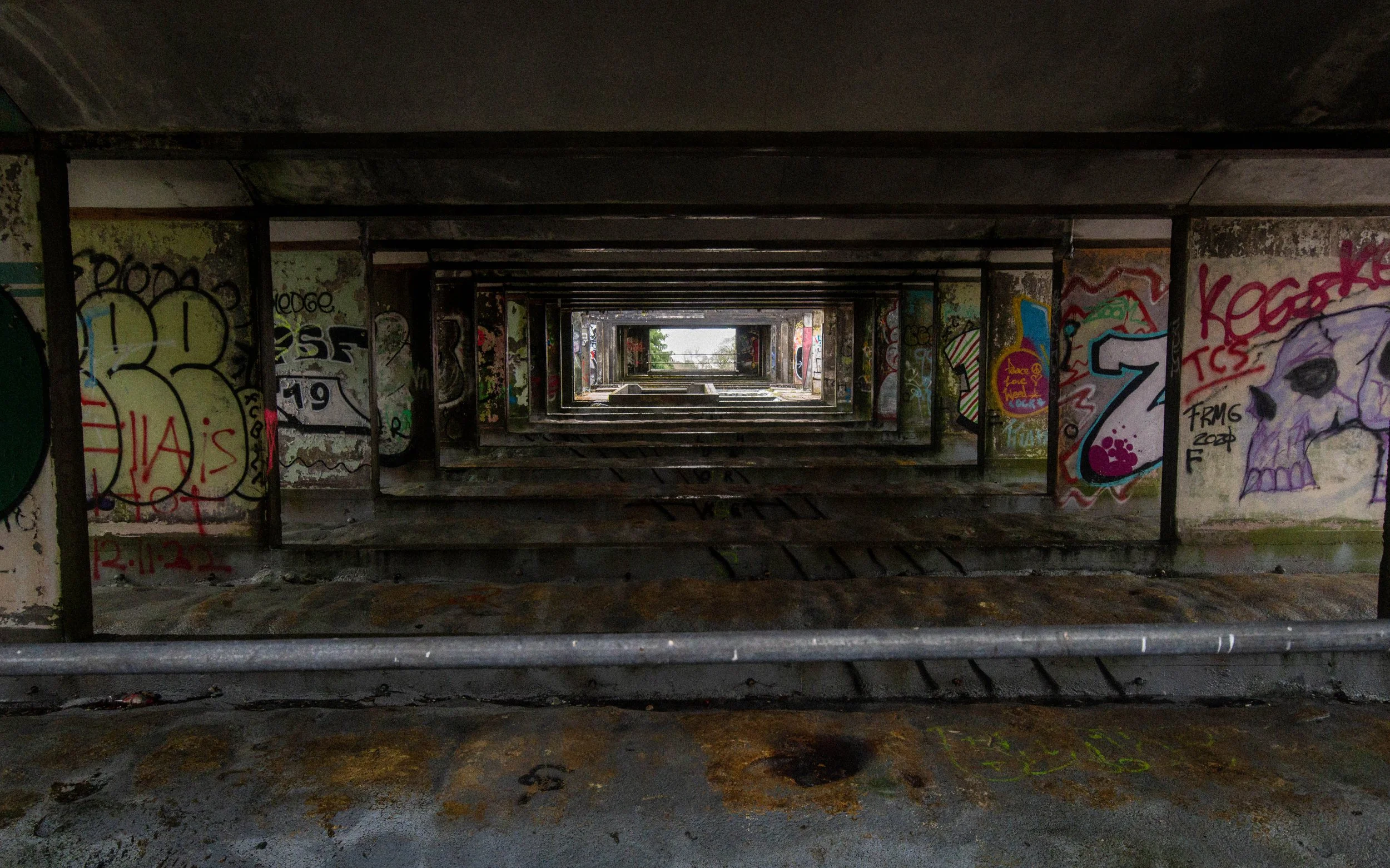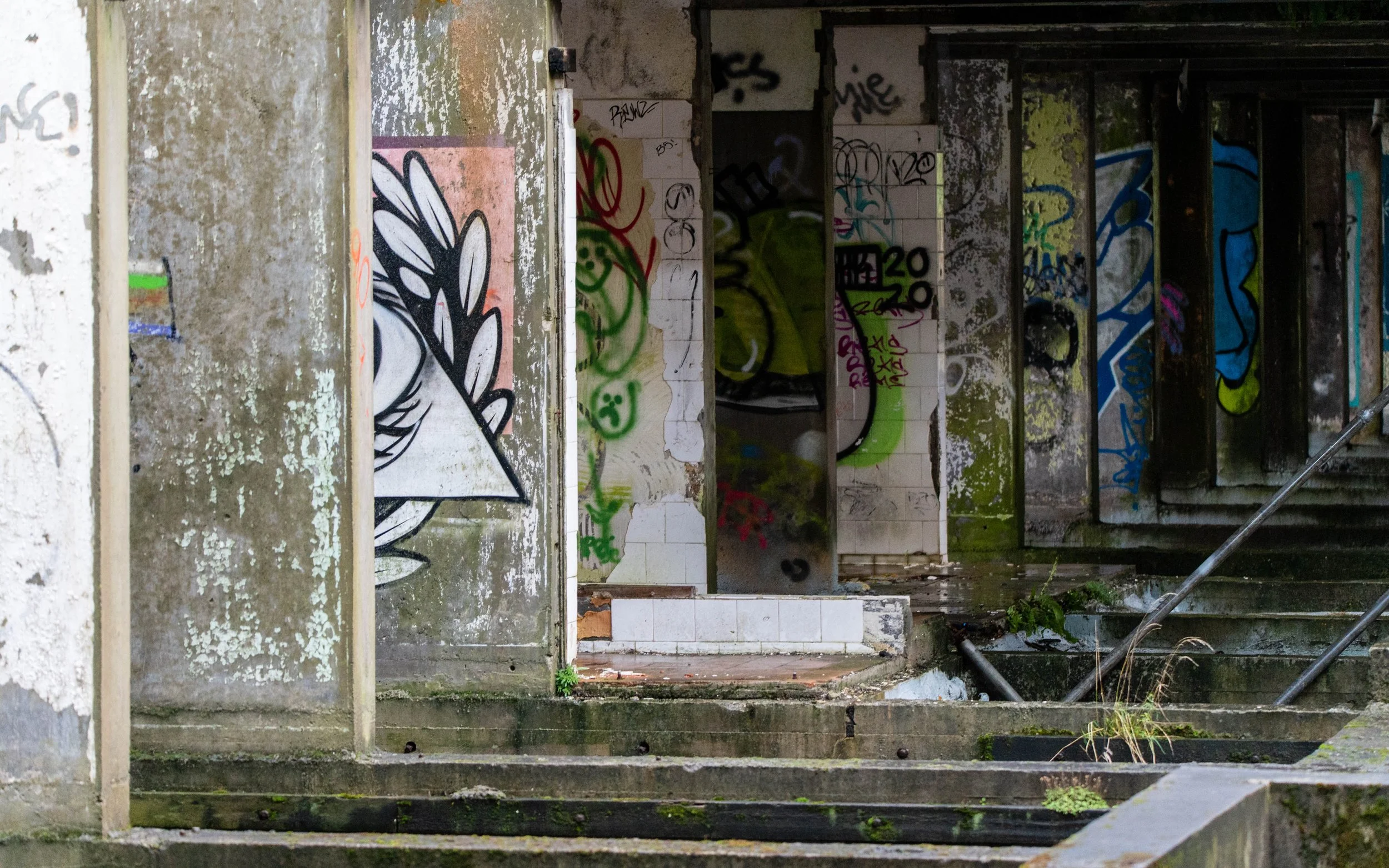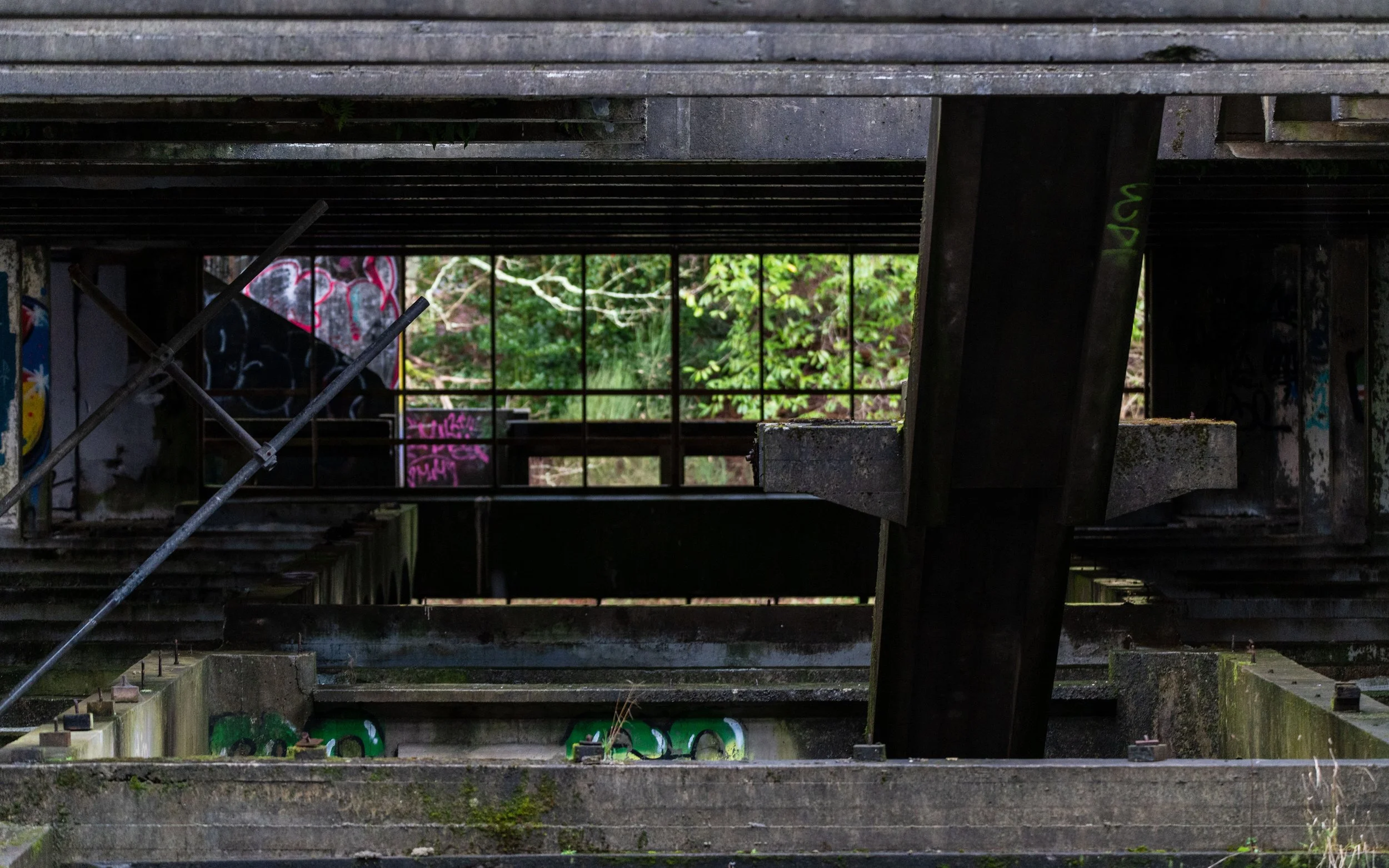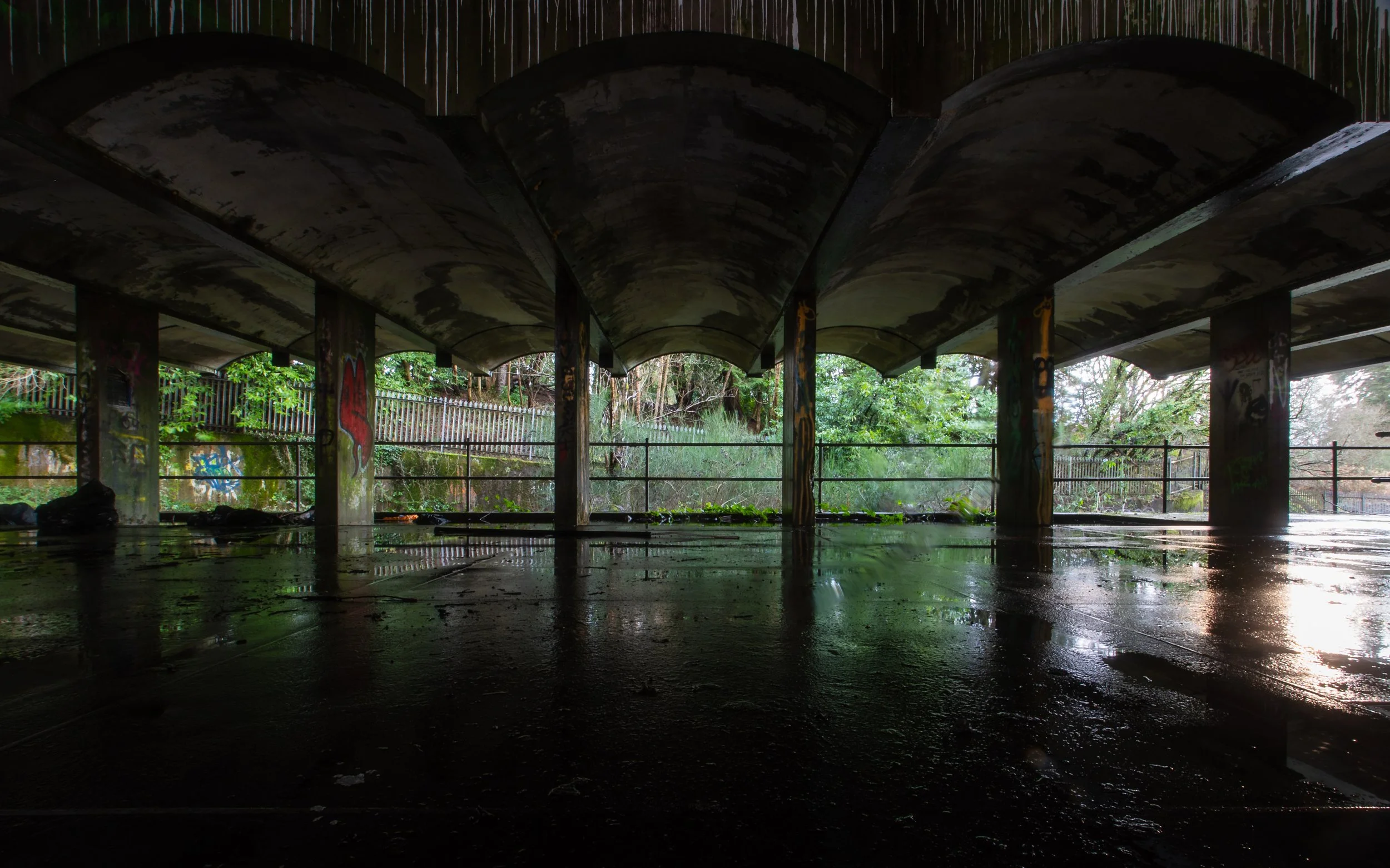St. Peter’s Seminary
There was something alive there, I was sure of it. The noises didn’t make sense. Drip, drip, rustle, drip, ting, drip, drip…
We walked closer and the concrete yawned its rotten spaces at us.
We had to go in.
The seminary had been built in the 60’s and abandoned in the 90’s. A few years back the worst of the debris had been cleared and the area fenced off. We had reckoned with some shimmying and scaling to gain access but, in the end, we walked right in. All bars to entry torn down or asunder by previous visitors. Even the best fencing has little potency against the dedicated vandal.
Rain dripped on and poured through the concrete into what was once the chapel. The walls were long gone but, even still, each drop and step amplified tenfold in the brutalist amphitheatre. Either side of the altar there were sunken cloisters and side chapels – every inch of them covered in graffiti, the stone itself a palimpsest of artistry and annihilation.
A river of water cascaded down stairs and into the underbuilding – waterlogged floors rich with mud and debris. In the darkest, mouldering corners, and in a state of horror film hyper-vigilance, we found the only bare walls. Damp sound buffeted the walls; an absence of light, textures of decay, and the pooling and cloying at our feet.
Galleries on higher floors bore cells interspersed with sheer drops through the skeleton of the building. Walking along the de-cassocked husks, one cannot help but feel the folly of scale. The seminary was designed to comfortably house 100 but failed, even at its fullest, to achieve more than 56 residents. The smashed showers and vacant floors of the galleries echo the vacancy that characterised the spaces between these walls - even at their most vibrant.
The seminary cannot be far from its existential tipping point. Everything is needed and nothing renewed. Preservation of this ruin will prove difficult after so many years of the elements inflicting their creeping, tender violence. Yet, even in death, there is beauty. Sweeping lines of the concrete and the advancing lines of decay. The imagination runs riot with possibilities of how this space might be and how it might have been.
For years a policy of waiting has infected decision making when it comes to our architectural heritage. As a Category A Listed building, any would-be saviours are limited in what they could hope to do. Now, with regret, it looks like another building is being lost to neglect and indecision. As we walked through St Peter’s, I was glad of the chance to experience it and filled with a mourning for its inevitable fate.



